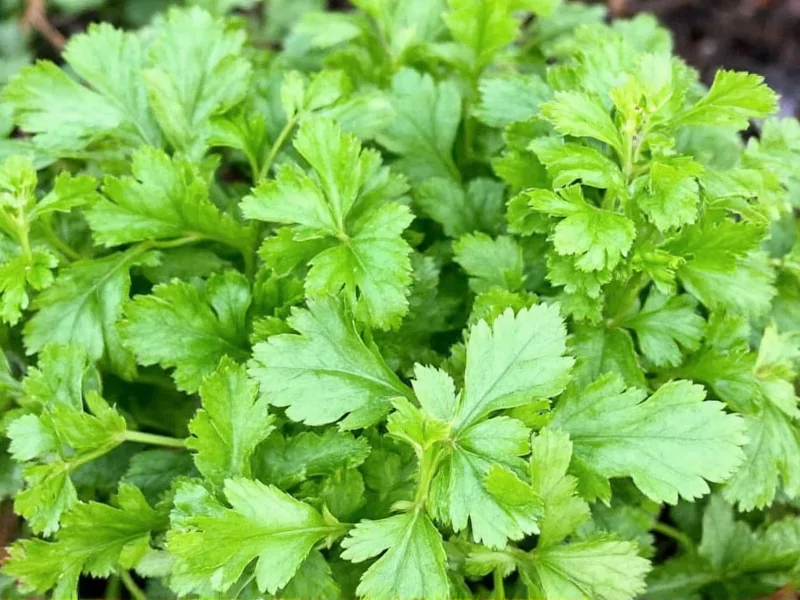Understanding the various names for this versatile herb is essential for navigating recipes, grocery shopping, and gardening across different regions. The naming confusion stems from linguistic evolution and regional preferences rather than botanical differences—the plant remains Coriandrum sativum regardless of what you call it.
Botanical Background of Cilantro
Cilantro belongs to the Apiaceae family and shares its scientific name Coriandrum sativum across all regions. This annual herb originated in regions spanning from southern Europe to North Africa and western Asia. The entire plant is edible, but different parts receive distinct naming conventions depending on geography and culinary tradition.
Why Cilantro Has Multiple Names
The term "cilantro" entered American English from Spanish, where it specifically refers to the fresh leaves and stems. Meanwhile, British English adopted "coriander" from the French coriandre, which itself derived from the Greek koriannon. This linguistic divergence explains why American recipes specify "cilantro" while British and Commonwealth recipes use "coriander" for the same fresh herb.
Adding to the confusion, "coriander" globally refers to the dried seeds of the same plant. In American English, this creates a distinction where "cilantro" means the fresh herb and "coriander" means the spice. Elsewhere, "coriander" serves as the umbrella term for both.
Global Names for Cilantro Across Languages
Regional variations in naming reflect centuries of trade, colonization, and cultural exchange. The following table details how this herb is identified worldwide:
| Language/Region | Term for Fresh Leaves | Term for Seeds |
|---|---|---|
| United States | Cilantro | Coriander seeds |
| United Kingdom, Australia, India | Coriander (fresh) | Coriander seeds |
| Spanish-speaking countries | Cilantro | Coriandro (seeds) |
| French | Coriandre (fresh) | Graines de coriandre |
| Hindi | Dhaniya (leaves) | Dhaniya (seeds) |
| Chinese (Mandarin) | Yán suī (英芙) | Yán suī zǐ (英芙子) |
| Arabic | Kuzbara (كزبرا) | Bizr al-kuzbara ( بزر الكزبرا) |
Culinary Implications of Naming Differences
Understanding regional cilantro names prevents recipe mishaps. When following international recipes, recognize that "coriander" in a British cookbook refers to what Americans call "cilantro." Similarly, "coriander seeds" appear consistently worldwide, though some Indian recipes may use "dhaniya" for both fresh and dried forms.
Chefs working in multicultural environments must clarify terms to avoid confusion. Many professional kitchens now specify "fresh coriander leaves" or "coriander seeds" in recipe documentation to eliminate ambiguity. This precision proves especially valuable when sourcing ingredients from international suppliers where regional naming conventions apply.
Additional Terminology You Might Encounter
Beyond the primary naming variations, several specialized terms appear in culinary and botanical contexts:
- Coriander root - Used prominently in Thai cuisine, with a more intense flavor than leaves
- Chinese parsley - Common alternative name in some Asian markets
- Root cilantro - Refers specifically to the edible taproot
- Coriander weed - Informal term sometimes used by gardeners
- Long coriander - Refers to Eryngium foetidum, a different but similar-tasting herb
When researching growing techniques, you might encounter the term "culantro" (with a 'u'), which actually refers to a different plant (Eryngium foetidum) sometimes called Mexican coriander or spiny coriander. This common misnomer creates additional confusion for gardeners seeking authentic cilantro varieties.
Why Understanding Cilantro Names Matters
Accurate identification of this herb affects more than just recipe execution. Gardeners selecting seeds must recognize that "coriander" seeds will grow the same plant Americans call "cilantro." Similarly, travelers to international markets need to know local terms to find this essential ingredient.
The distinction between regional naming conventions for cilantro names also reveals fascinating cultural connections. The Spanish "cilantro" preserves the original Greek root more directly than the French-influenced "coriander" used elsewhere, demonstrating how language evolves through trade routes and colonization patterns.
Frequently Asked Questions
Is cilantro the same plant as coriander?
Yes, cilantro and coriander come from the same plant (Coriandrum sativum). 'Cilantro' refers to the fresh leaves and stems in American English, while 'coriander' describes both the fresh herb in most other English-speaking countries and the seeds worldwide.
Why do Americans call it cilantro instead of coriander?
Americans adopted 'cilantro' from Spanish, which itself derived from the Greek 'koris' (bug), referencing the plant's distinctive scent. British English took the French version 'coriandre,' which became 'coriander' in English. This linguistic divergence created the current naming difference between American and other English dialects.
What's the difference between cilantro and culantro?
Cilantro (Coriandrum sativum) and culantro (Eryngium foetidum) are different plants. Cilantro has delicate, lacy leaves, while culantro has long, serrated leaves with a stronger flavor. Culantro is sometimes called Mexican coriander or spiny coriander, adding to the confusion.
Can I substitute coriander leaves for cilantro in recipes?
Yes, coriander leaves and cilantro are identical. If a British recipe calls for 'coriander' and you're in America, you'll need the fresh herb sold as 'cilantro' in US markets. The substitution is 1:1 since they're the same plant.
Why do cilantro names vary so much across different countries?
The naming variations stem from historical trade routes, colonization patterns, and linguistic evolution. Spanish-speaking regions preserved the original Greek-derived term as 'cilantro,' while French-influenced regions adopted 'coriandre,' which became 'coriander' in English. These divergent paths created the current global naming landscape for this ancient herb.











 浙公网安备
33010002000092号
浙公网安备
33010002000092号 浙B2-20120091-4
浙B2-20120091-4